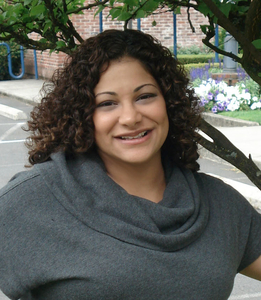The COVID-19 pandemic has disrupted the lives of people around the globe, particularly for children. According to a report by The National Academies of Sciences, Engineering and Medicine, “Disrupted sleep, school closures, social isolation, financial hardship, and racial trauma — including violence against Black communities, protests against that violence, and the disproportionate impact of COVID-19 on marginalized communities — have changed the lives of youth in 2020 and 2021.”
Additionally, thousands of children across the nation have lost parents, grandparents, and other loved ones during the pandemic. In fact, in California, more than 30% of students surveyed in March said they’d lost someone close to them over the past year.
Students need more support and resources than ever. They need to relearn how to be in school and sharpen their social-emotional learning and coping skills. We can not and must not respond to any increase in classroom disruption with more police presence in schools or through harsh disciplinary actions.
Parents, youth advocates, doctors, social workers, and many groups in Pennsylvania and across the nation warned that students would be returning to in-person school in the fall of 2021 with increased trauma, anxiety, and loss of social and emotional skills. Many urged school districts to prepare for these dynamics by hiring additional social workers, counselors, nurses and therapists.
Children spent nearly 18 months “unlearning” how to be a student once COVID-19 forced schools to close to in-person learning. There was little to no social interaction between students during this time. Many of them could only connect to others through their computers or phones, so chatting, texting, and social media were their main connection to the outside world.
Learning from home, students were able to eat, drink, talk, move around, or go to the bathroom whenever they wanted for most of those 18 months. Most were not required to wear any uniform, and many were not required to be on camera.
The behavior issues that we are seeing in school this fall are not unexpected or surprising given what youth have gone through during the pandemic. Yet many school administrators thought kids would remember how to behave in the classroom and that students would be happy to return to “normal.” The first four to six weeks of school should have been spent helping students remember how to self-regulate their emotions. This could be done by listening to and supporting their traumas, praising them for having come back to school, and encouraging ways to use their devices they had relied so much on throughout the virtual classroom into an acceptable learning tool.
Students are having a hard time not being able to have their needs met right away, which can cause feelings of anger and anxiety about being in school.
We also must note that the pandemic also deepened inequities and issues that existed pre-COVID. There were students that had to step into adult roles during the pandemic. There were students who became caretakers for younger or much older family members. There were students who worked to help pay living expenses when a parent died or lost their job. Some experienced abuse because they were home all day.
Again, none of the behaviors we have seen in schools this year is unexpected, but the answer is not to increase suspension, expulsions or the presence of police officers. All students deserve an education, and they all deserve to be in a school where they feel safe, nurtured, and respected, not pushed out. This is a chance to build relationships with our youth. A chance to model and teach compassion. In fact, we have heard from teachers who use these strategies that classroom management has actually been easier this year as students feel closer to their teacher.
We call on school boards, school administrators, and staff to shift away from exclusionary discipline; to invest in additional social workers, counselors, nurses, and therapists; and dedicate time building relationships with every single student in your schools. These solutions are neither quick nor easy. But it is vital that we invest in and support our youth, particularly in the midst of a global pandemic.



